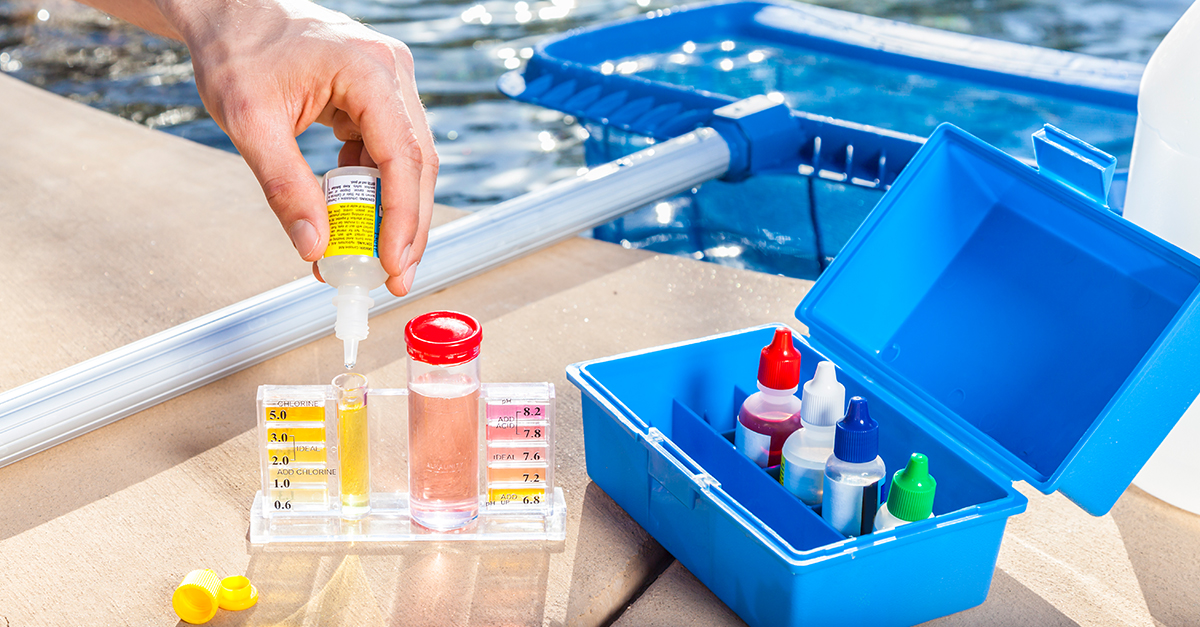Achieving crystal-clear pool water is an intricate dance of diligence, technology, and science. For custodial professionals in schools, recreation facilities, and other buildings with swimming pools, the battle against contaminants is ongoing. Ensuring pool hygiene is crucial, not only for the aesthetic appeal but also for the health and safety of swimmers.
This comprehensive guide uncovers the multifaceted strategies essential for maintaining pristine swimming conditions and eliminating health-compromising contaminants.
Keep it balanced
Water balance is a cornerstone of pool service. It involves managing the pH, total alkalinity, and calcium hardness levels to ensure water that is neither corrosive nor scaling. Ideally, pool custodians should maintain the pH between 7.2 and 7.8. This range is optimal for chlorine effectiveness and user comfort.
Total alkalinity, which helps stabilize pH levels, should be kept between 80 and 120 parts per million (ppm), and calcium hardness should be between 200 and 400 ppm to prevent damage to the pool and discomfort to swimmers.
A spectrum of contaminants
Pool water can become a breeding ground for a variety of contaminants, including microorganisms like bacteria and algae, as well as physical debris such as leaves and dirt. Additionally, swimmers introduce contaminants, including sunscreen, sweat, and oils.
Effective pool hygiene management involves a proactive approach to both prevent these contaminants from entering the pool and to actively neutralize or remove them once present.
The chemical connection
At the forefront of pool hygiene is chemical sanitization. Chlorine and bromine are the sentinels against pathogenic threats, effectively neutralizing harmful bacteria and viruses. Keeping these chemicals at optimal levels—1-3 ppm for chlorine and 3-5 ppm for bromine—is a delicate balance, expertly maintained by seasoned pool service professionals. However, their use requires precision; excessive amounts can lead to swimmer discomfort.
Shock treatment is integral to pool maintenance. This process involves administering a potent dose of oxidizing chemicals to the pool water, targeting the breakdown of organic matter and the elimination of chloramines. Pool maintenance staff must schedule this task when the pool is not in use for an extended period, as the process byproducts, resulting from chlorine’s reaction with ammonia, are notorious for causing eye irritation and unpleasant odors.
Add elbow grease
While chemicals play a leading role in sanitization, physical cleaning is equally critical. Pool service experts advocate for daily skimming, regular vacuuming, and thorough brushing of pool walls and floors. These actions prevent algae buildup and sediment accumulation, ensuring the pool remains visually appealing and hygienically sound.
Advanced sanitization solutions
Innovation in pool technology offers additional arsenals in the fight against contaminants:
- Ultraviolet (UV) light systems: A marvel of modern pool technology, UV systems expose circulating water to ultraviolet light, effectively inactivating microorganisms by disrupting their DNA. This reduces the overall chemical load, offering a more swimmer-friendly environment.
- Ozone generators: Ozone, a potent oxidizer, offers another layer of sanitization. Ozone gas infused into the pool water attacks and neutralizes contaminants, supporting clearer and cleaner water with less chemical reliance.
- Saltwater chlorinators: Saltwater systems represent a gentler alternative to traditional sanitization methods. Through electrolysis, these systems generate chlorine from salt, maintaining a consistent sanitizing presence that’s easier on the eyes and skin.
Circulation and filtration
Effective circulation and robust filtration are the unsung heroes of pool hygiene. Ensuring that the pool’s pump and filtration system are in top condition is crucial for dispersing sanitizers and capturing particulates. Regular pool service checks and maintenance are indispensable for these systems’ efficacy.
Test and retest
Vigilant monitoring of water chemistry through regular testing is the cornerstone of effective pool management. This process not only involves adjusting sanitizer levels but also balancing pH, alkalinity, and hardness. Professional pool service providers are adept at navigating these complexities, ensuring the water remains safe and inviting.
Partner for success
Maintaining a hygienic pool environment is a complex process, demanding a blend of chemical precision, physical upkeep, and technological intervention. By partnering with professional pool service providers, facility managers and pool maintenance staff can navigate this path confidently, ensuring their pools remain a bastion of health, safety, and enjoyment. The clear waters of a well-maintained pool are a testament to the meticulous care and advanced strategies employed in the quest to eliminate contaminants.



